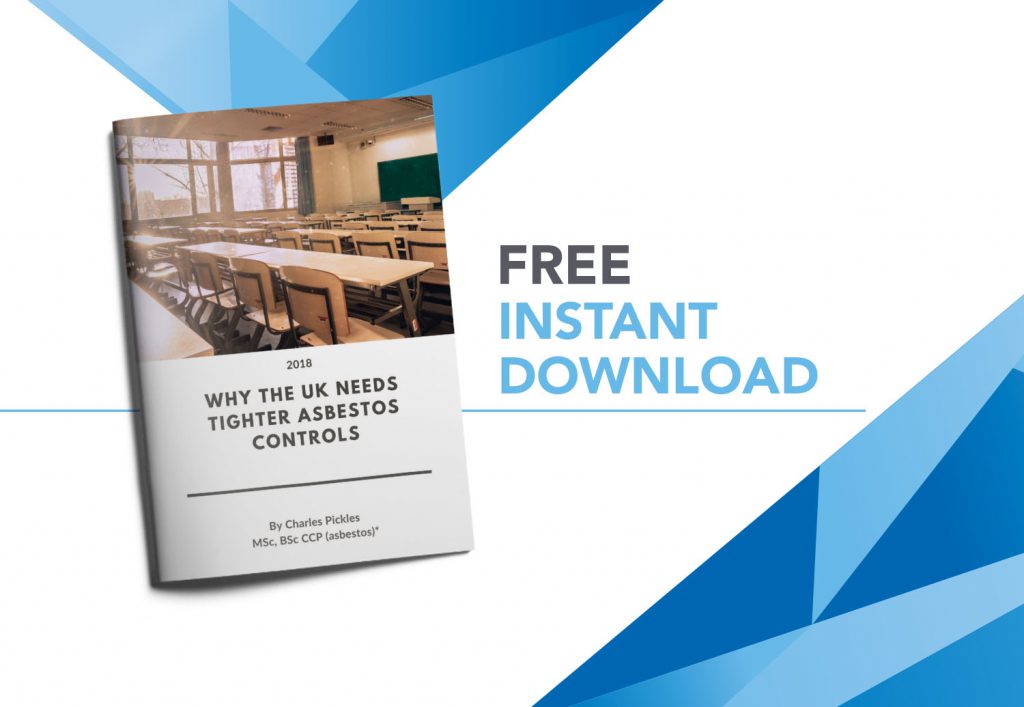ASBESTOS THE TRUTH: PROTECTING CHILDREN AND TEACHERS THROUGH TIGHTER ASBESTOS CONTROLS
1 February 2019
According to the WHO (World Health Organisation), The UK has the highest mesothelioma death rate in comparison to other European countries, yet continues to use outdated asbestos air fibre monitoring techniques due to a higher level of ‘acceptable’ asbestos exposure used in regulations.
Robin Howie from Robin Howie Associates, previously president of the British Occupational Hygiene Society (BOHS) (1998-99), delivered the final keynote speech at Asbestos The Truth conference 2018. Praised for his involvement in over 800 legal cases mainly relating to occupational asbestos-induced diseases and publications of over 100 papers and articles, Howie has been an active participant in moving the asbestos industry towards lowering the current HSE guidelines for ‘acceptable’ airborne asbestos fibres.
Mesothelioma Risks Relative To Age
According to Howie, there are 4 factors that accumulate to Mesothelioma caused by asbestos exposure:
- Asbestos type
- Age of first exposure
- Life expectancy
- Cumulative exposure to asbestos
Howie stated during his speech using data taken from Hodgson & Darnton (2000) that a newborn child subjected to low-level asbestos exposure is 7 times more likely to contract mesothelioma than that of a 30-year-old as shown in the chart below:

(Data extracted from Hodgson JT and Darnton A 2000)
This means that children are far more likely to contract mesothelioma within their lifetime than adults.
Mesothelioma death rates are currently highlighted in the media by the deaths of teachers and nurses who have been working within public buildings across a number of years that have been manufactured using asbestos. We have yet to see the effect that this has upon children who attend schools from the ages of 4/5 where the risk factor of developing mesothelioma during their lifetime is over 5 times more likely than that of the average teacher.
Cumulative Exposure
It is important to factor in the amount of time an individual is subjected to low-level exposure. For teachers and children at school who also live in housing built during the postwar period, low-level chronic exposure can be as much as 70-80 hours per week and can be as much as 100-120 hours per week for pre-school children. These estimations are cumulative figures based on a 40-hour working week and residence in post-war built housing.
The Current Clearance Indicator
The current clearance level as stated in HSG 248 (2018), which stands at 0.01f/ml, is not just regarded as the current clearance level indicator for the UK but is also used in the interpretation of reassurance background samples. Despite the fact that since 1988 ACoP has stated that:
“The level of 0.01f/ml should be taken only as a transient indication of site cleanliness, in conjunction with visual inspection, and not as an acceptable permanent environmental level.”
- SC CAWR 2006 Work with materials containing asbestos ACOP para 17 p68
This means that the current clearance level indicator used during asbestos air monitoring testing is not safe. The clearance level indicator used in the UK has not been revised in 30 years despite extensive research, published white papers/articles and increase in mesothelioma cases.
Current Testing Methods
The UK’s current legislative regime stipulates that asbestos exposure should be reduced as far as reasonably practicable. In order to determine if the current ‘accepted’ clearance indicator of 0.01f/ml has been reached for asbestos that has been left in situ (where asbestos is safe to manage and monitor rather than removed), the UK currently conducts asbestos fibre air testing and monitoring typically using Phase Contrast Microscopy/Phase Contrast Optical Microscopy (PCM/PCOM) which is arguably
“[…]insufficiently sensitive to observe the vast majority of asbestos fibres in a given sample of air.”
- Charles Pickles, Why The UK Needs Tighter Asbestos Controls White Paper, 2018, page 4
PCM/PCOM testing is limited in its level of asbestos fibre detection (0.01 f/cm3) compared to other, currently available testing methods. Other European nations who have a lower asbestos to mesothelioma death ratio than the UK, are currently using more powerful technologies to detect airborne asbestos fibres in the air.
Such technologies as Scanning Electron Microscopy (SEM), are currently available for businesses within the UK to use. However, they omit to do so favouring the commonly cheaper option of PCM/PCOM (which only meets the current clearance level indicator) despite the available knowledge and research clarifying that the current clearance level indicator of 0.01 f/ml is ineffective at protecting individuals from asbestos exposures.
Scanning Electron Microscopy (SEM)
Unlike PCM/PCOM, SEM testing enables asbestos airborne fibres to be quantified at much lower levels achieving levels of detection to 0.0005 f/ml. This greater level of detail and information that can be gathered via SEM means the UK has the capabilities to test lower levels of asbestos fibres than the current clearance indicator of 0.01 f/ml requires. As this technology is currently available, why is the UK continuing to use outdated and insufficient means of air testing that evidently puts the lives of children, teachers and anyone else residing in public or residential post-war buildings.
“The UK was once the world’s largest importer of asbestos and its incorporation in commonly used building materials throughout the 1950s and 1960s means that it remains in many shops, houses, hospitals, offices and schools that are still in use today.”
- Charles Pickles, Why The UK Needs Tighter Asbestos Controls, page 21
The correlation of the UK historically being the highest importer of asbestos in Europe and the UK having the highest death rate from mesothelioma demonstrates that the current actions and regulations in place are insufficient to protect the individuals with asbestos affected buildings.
Food For Thought
Regulations must be updated to come in line with the current research. Further deaths are preventable however without action from the relevant regulations providers the UK will see a continued rise in the number of mesothelioma deaths along with a lower age mortality rate for those affected.
More Information
Robin Howie Asbestos The Truth Bio: http://www.asbestosthetruth.com/speaker/robin-howie/
Hodgson JT and Darnton A (2000): The Quantitative Risk of Mesothelioma and Lung Cancer In Asbestos Exposure
Control of Asbestos Regulations 2012 – Approved Code of Practice and guidance: http://www.hse.gov.uk/pubns/books/l143.htm
Risk Assessment FAQs
Conducting your health and safety risk assessment can be a daunting task. Before you get started, read our clients' top risk assessment FAQs.
_4.png)
Download From NexGen
Asbestos Is Schools White Paper
With widespread concern over the potentially harmful effects of asbestos in schools, modern air sampling and analytical techniques have the ability to better protect the health and safety of teachers and pupils. There is no safe limit of asbestos for people to breathe and we want everyone with a responsibility for safety in our schools to better understand the situation.
The white paper has been designed to provide important information to those who manage asbestos in buildings, in particular those who are responsible for the maintenance of the property and teachers.
.png)
Download From NexGen
Tool Box Talk: Asbestos Awareness
As part of Lucion’s Take Care Be Aware initiative, we actively take care of our health and safety responsibilities, with continuous awareness of our commitments to knowledge share and educate.
In doing so we have created a ‘toolbox talk’ on asbestos awareness to raise awareness of the hazards associated with asbestos-containing materials, enabling safety professionals to share knowledge and overall save the time and effort in producing them for you and your teams.
_2.png)
Download From NexGen


 NexGen
NexGen












